Several new resources are now available to support understanding racism in nursing and taking action to alleviate it.
Virtual summit: Impacts of systemic racism
The National Commission to Address Racism in Nursing (the Commission), co-led by the American Nurses Association (ANA), National Black Nurses Association, National Coalition of Ethnic Minority Nurse Associations, and National Association of Hispanic Nurses, held its second virtual summit in November 2022 to engage the nursing community in meaningful dialogue about how systemic racism impacts nursing and how to go about addressing it. The keynote speaker was Kenya Beard, EdD, AGACNP-BC, CNE, ANEF, FAAN, associate provost for social mission and academic excellence at Chamberlain University and the Commission’s representative for the National League for Nursing. Beard’s thoughtful and dynamic presentation is now available online at youtube.com/watch?v=qhhRpa4xHkA. She discussed practical examples of how systemic racism permeates entrenched practices. For example, interpersonal racism would be apparent when a patient uses a racial slur in speaking to a nurse of color. However, if an organization’s response to this scenario was simply to note that nothing could be done because patients have the right to say what they would like, this case study also reflects systemically and structurally racist written or unwritten policies.
Nurses’ voices on diversity, equity, inclusion, racism
A new resource for nurses seeking to better understand the challenges and perspectives of colleagues from diverse racial, gender, cultural, and ethnic backgrounds is Journey to Equity: Strengthening the Nursing Profession, by Sue Johnson, PhD, RN, NPD-BC, NE-BC, FAAN and Pamela S. Dickerson, PhD, RN, NPDA-BC, FAAN, an ANA member (nursingworld.org/nurses-books/journey-to-equity-strengthening-the-profession-of/). Johnson, principal and founder of RN Innovations, an education management company, and Dickerson, a nursing professional development specialist, compiled the personal stories of 14 nurses who describe how they came to the profession, the unique challenges they faced, and the lessons they learned as they advanced in their careers. These narratives provide critical insight into diversity, equity, and inclusion for nurses who are leading change and improvement in healthcare now and in the future.
Reporting on racism in nursing
Nurse-led national commission examines racism in nursing
Actionable allyship webinar and infographic
The Commission defines allyship as “… an ethical duty through intentional interventions, advocacy and support to eliminate harmful acts, words or deeds and creating space to amplify voices that are not traditionally heard, recognized or welcomed.”
In November 2022, the Commission introduced the second Navigate Nursing webinar on racism, “Actionable Allyship to Address Racism in Nursing.” The intent of the webinar was to listen to voices of nurses describing their allyship experiences; define and describe allyship and why it is needed in nursing; consider opportunities for allyship; take action to be an action-oriented ally; and use the resources to continue to learn. Laura Fennimore, PhD, RN, a Pennsylvania State Nurses Association member, Katie Boston-Leary, PhD, MBA, RN, director of Nursing Programs at ANA, and Pat Patton, MSN, RN, guided the participants through this process.
To date, 5,656 nurses have accessed the webinar in which five courageous nurses shared their experiences of allyship in four domains being explored by the Commission: education, policy, practice, and research. Notably, all people are impacted by nurses not being allies—individuals, fellow nurses, nursing students, patients, and families. Recognition and education are the first steps to being an ally.
For nurses who would like to become allies with action but might not know what to do, the Commission developed an infographic with progressive zones. (See Allyship in Nursing)
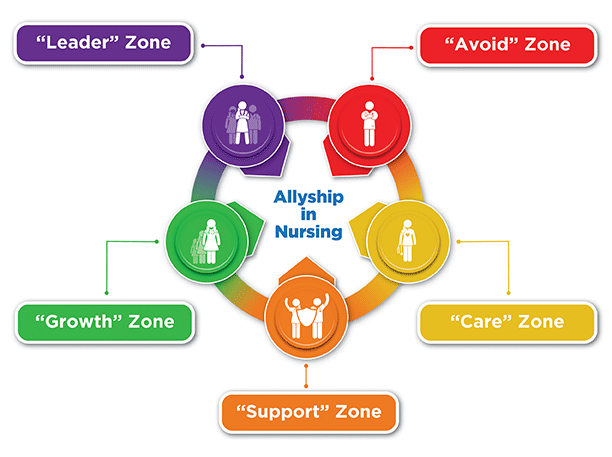
Resources
Elevate your awareness of racism in nursing: Resources for change (nursingworld.org/practice-policy/workforce/racism-in-nursing/resources-for-change/)
Journey to Equity: Strengthening the Profession of Nursing (nursingworld.org/nurses-books/journey-to-equity-strengthening-the-profession-of)
National Commission to Address Racism in Nursing (nursingworld.org/commission-to-address-racism-in-nursing)
National Commission to Address Racism in Nursing Virtual Summit video (youtube.com/watch?v=qhhRpa4xHkA)
Navigate Nursing Webinar: Actionable Allyship to Address Racism in Nursing (nursingworld.org/continuing-education/Actionable-Allyship-to-Address-Racism-in-Nursing/)
Top ten ways to be an antiracist in nursing (nursingworld.org/practice-policy/workforce/racism-in-nursing/national-commission-to-address-racism-in-nursing/antiracism-in-nursing/)


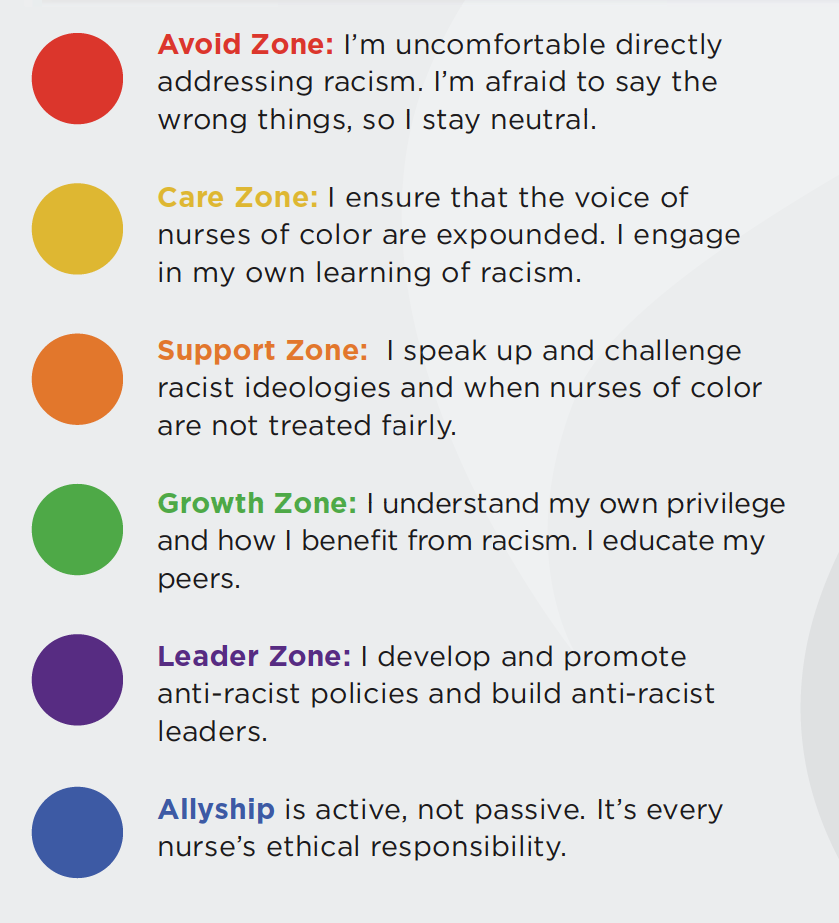



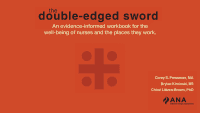
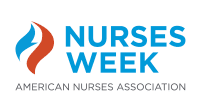






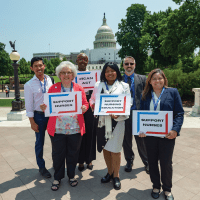


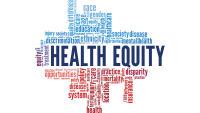


1 Comment. Leave new
Thank you for addressing this topic of racism in the nursing profession. I have been a nurse for 12 years and I have experienced racism since I was in nursing school when my teacher made fun of my hair in front of the class. I was about 20 years old at the time. I think the younger a nurse is in the profession, there is a fear of speaking up. In my case a fear of failing school. A nurse may fear losing their job or being an outcast. I believe that many nurses of color have dealt with this problem as just part of the job. In addition to that I do believe that there is certain specialties in nursing that are deemed as not for nurses of color. Almost like a segregation in the profession. Thank you for the resources and your attention to this matter.